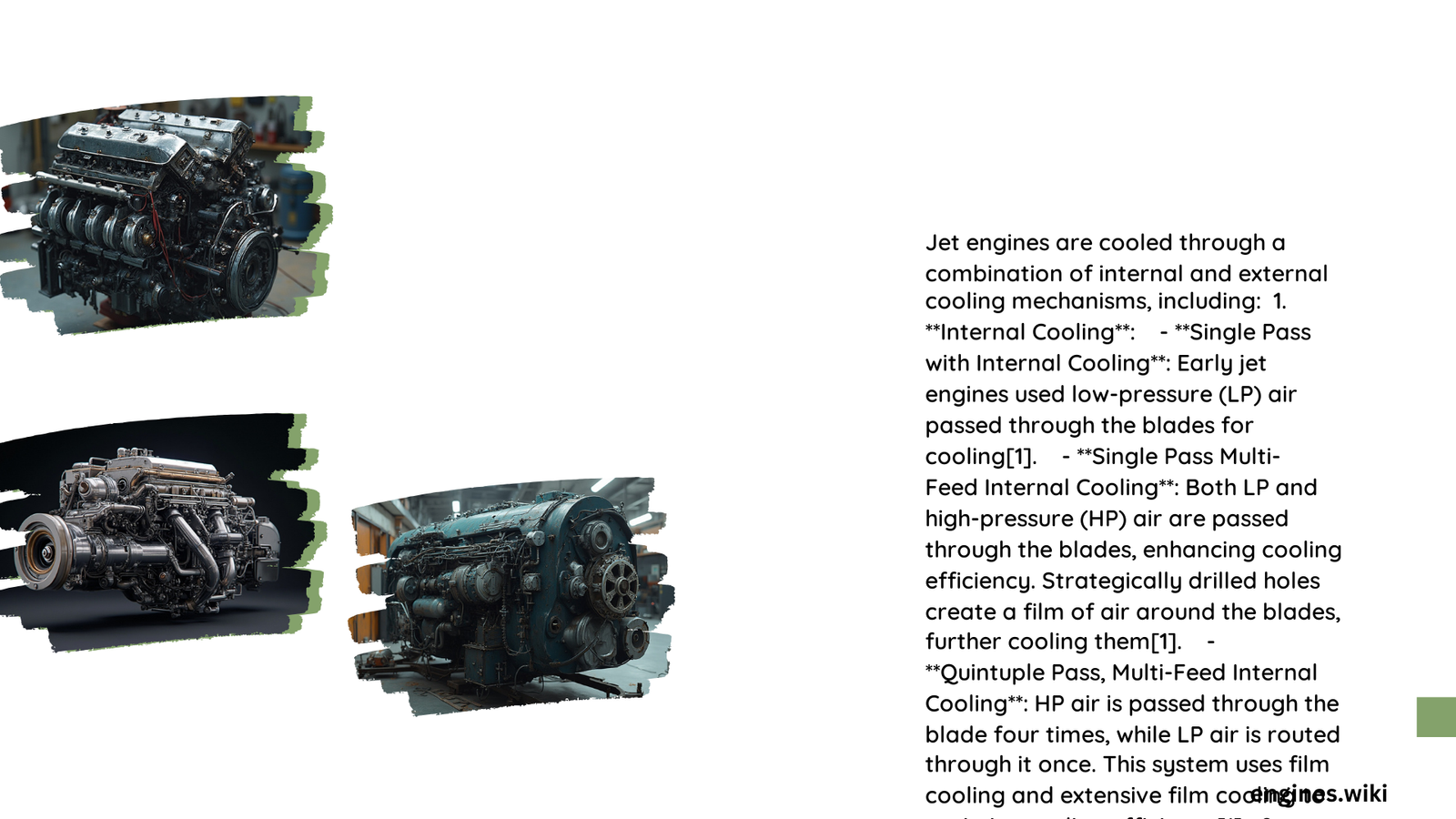Jet engine cooling systems are critical for maintaining optimal performance, preventing overheating, and ensuring longevity. These systems employ various mechanisms, including air cooling, film cooling, and advanced materials, to manage the extreme temperatures generated during operation. This article explores the intricate cooling technologies that keep jet engines running efficiently and safely.
What Are the Primary Cooling Mechanisms in Jet Engines?
Jet engines utilize several sophisticated cooling mechanisms to manage the intense heat generated during operation:
- Air Cooling Systems
- Film Cooling
- Vortex Tubes
- Advanced Material Technologies
- Heat Exchangers and Cooling Passages
Let’s delve into each of these mechanisms to understand their role in jet engine cooling.
How Does Air Cooling Work in Jet Engines?
Air cooling is a fundamental technique used in jet engines to regulate temperature. Here’s how it works:
- Compressed air from the compressor stages is bled and directed through internal passageways to cool turbine blades, stators, and discs.
- Early designs used simple single-pass systems, but modern engines employ more complex multi-pass configurations.
- Advanced systems like the Quintuple Pass, Multi-Feed Internal Cooling with Extensive Film Cooling, use both low-pressure (LP) and high-pressure (HP) air for enhanced efficiency.
What Is Film Cooling and How Does It Protect Turbine Blades?
Film cooling is a crucial technique for protecting turbine blades from extreme temperatures:
- Tiny holes are drilled in the turbine blades.
- Cooling air is vented through these holes onto the blade surface.
- This creates a protective film of air that reduces the blade’s temperature.
- The cooling air emerges at low velocity, forming a protective layer, especially near the leading edge of the blades.
How Do Vortex Tubes Enhance Jet Engine Cooling?
Vortex tubes represent a recent innovation in jet engine cooling technology:
- They separate compressed air into hot and cool air streams.
- This allows for more efficient cooling by directing cooler air to regions that need it most.
- The technology optimizes the use of valuable cooling air, improving overall engine efficiency.
What Role Do Advanced Materials Play in Jet Engine Cooling?
Material technology is crucial in managing jet engine temperatures:
- Turbine blades are made from high-temperature metal alloys like Inconel and single-crystal metals.
- These materials have superior creep and fatigue properties.
- However, they are heavy and increase centrifugal stresses, making effective cooling even more critical.
How Do Heat Exchangers and Cooling Passages Contribute to Engine Cooling?
Heat exchangers and cooling passages are integral to the internal cooling system of jet engines:
- Cooling air passes through serpentine labyrinth passages within the blades.
- These passages act as multi-pass heat exchangers.
- Internal ribs and fins increase the surface area for cooling.
- Pressure differences and centrifugal forces drive the cooling air radially through these passages.
What Are the Temperature Ranges and Cooling Fluids Used in Jet Engines?

Understanding the temperature ranges and cooling fluids is crucial for appreciating the challenges of jet engine cooling:
| Component | Temperature Range | Cooling Fluid |
|---|---|---|
| Combustion Process | Exceeds material melting point | N/A |
| Turbine Blades | 1000-1200°C (1832-2192°F) | Compressed air |
| Cooling Air Source | Cooler than mainstream gases | Air from compressor stages |
How Do Flow Rates and Efficiency Metrics Impact Jet Engine Cooling?
Flow rates and efficiency metrics are key factors in jet engine cooling:
- Cooling air flow rate is driven by pressure differences between compressor stages and turbine section.
- Improved combustor designs have reduced pressure losses, enhancing cooling efficiency.
- Film cooling effectiveness is measured by the reduction in blade temperature.
- Advanced multi-pass cooling systems significantly increase cooling efficiency.
What Are the Main Challenges and Costs Associated with Jet Engine Cooling?
Jet engine cooling faces several challenges and cost considerations:
- Balancing cooling needs with overall engine efficiency
- Optimizing cooling systems to minimize impact on thrust generation
- High costs of exotic materials and advanced cooling technologies
- Offsetting costs through increased engine longevity and performance
How Does Effective Cooling Impact Engine Longevity and Performance?
Proper cooling has a significant impact on jet engine longevity and performance:
- Maintains structural integrity of turbine blades and discs
- Prevents component failure due to overheating
- Allows engines to operate at higher temperatures and pressures
- Increases thrust and efficiency, particularly in high-bypass turbofan engines
- Reduces maintenance needs and extends engine life
In conclusion, the cooling of jet engines involves a complex interplay of advanced technologies and materials. From air cooling systems and film cooling to vortex tubes and sophisticated heat exchangers, these mechanisms work in concert to maintain optimal engine performance and longevity. As jet engine technology continues to evolve, so too will the cooling systems that keep these powerful machines running safely and efficiently.
